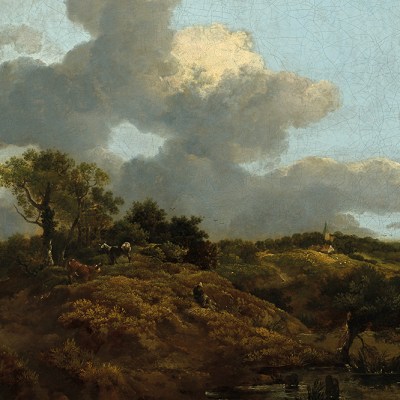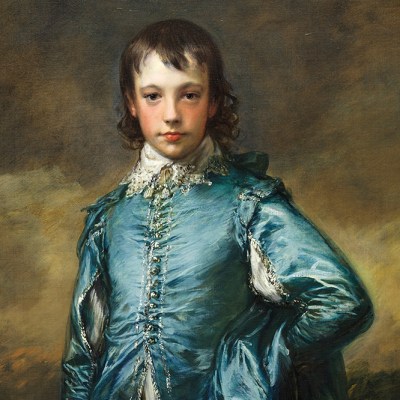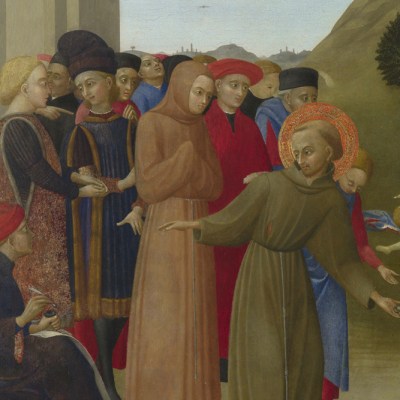A round-up of the best works of art that have recently entered public collections
Minneapolis Institute of Art
The Venerable Miguel Gerónimo Carmelo (1628–30), Francisco de Zurbarán
The Venerable Miguel Gerónimo Carmelo (1628–30) depicts Friar Carmelo in a moment of contemplation as he experiences a vision of the Immaculate Virgin Mary. It was one of two commissioned works Zurbarán created for a monastery in Seville. Both paintings were hung in the Sala de Profundis, the room where deceased monks were prepared for burial, but were seized during the Napoleonic Wars. The location of this particular work remained unknown for a long time until it was rediscovered in the private collection of Antonio Ferré Paris and authenticated by an expert in 2010. It now joins the permanent collections at the Minneapolis Institute of Art, where it will form part of a new display of Spanish paintings.
The Venerable Miguel Gerónimo Carmelo (1628–30), Francisco de Zurbarán. Minneapolis Institute of Art

Kimbell Art Museum, Fort Worth
Going to the Market, Early Morning (c. 1773), Thomas Gainsborough
Going to the Market, Early Morning (c. 1773) is considered one of Gainsborough’s most significant landscape paintings, demonstrating the artist’s talent for capturing the nuances of rural social life. He depicts, at the front of the painting, a girl riding sidesaddle, and a young man, both of whom have baskets of farm produce to sell, while behind them are colliers transporting sacks of coal by pack pony from coalfields nearby. The procession is watched by a poor woman seated by a stream with her two children. The painting was purchased in honour of the two heads of the Kimbell Art Foundation, Kay and Ben Fortson, and will join two works by the artist, Portrait of a Woman, Possibly of the Lloyd Family (c. 1750) and Suffolk Landscape (c. 1750), already in the museum’s collections.
Going to Market, Early Morning (c. 1773), Thomas Gainsborough. Kimbell Art Museum, Fort Worth

Fitzwilliam Museum, Cambridge
A Regency Coade torchère (1810)
The Fitzwilliam Museum has acquired an elaborate, 6ft-high stone torchère that once belonged to George, Prince of Wales (later King George IV). Originally produced as part of a set of 10 by Coade & Sealy of Lambeth in 1810 and designed by Thomas Hopper (1776–1856), the torchères were placed in the conservatory of George’s London residence, Carlton House, where they each held a brass lamp with six burners. The set was removed from the house prior to its demolition in 1827 and moved to the Coffee Room at Windsor Castle. They were later split up and sold separately.
Stone torchère (1810), Coade & Sealy, designed by Thomas Hopper. Courtesy Thomas Coulborn & Sons Ltd.

Nationalmuseum Sweden, Stockholm
Three donations of mid 20th-century illustrative works
Some 500 works by the Swedish illustrators Birger Lundquist, Bertil Almqvist and Allan Löthman have been donated to the Nationalmuseum Sweden in Stockholm by Per Birger Lundquist, Kaj Richard Bernstone and Nisse Larsson. Considered one of the country’s most talented illustrators, Lundquist (1910–52) produced thousands of works during his brief career. From the 1930s until his death, he worked at the newspaper Dagens Nyheter, where he often accompanied journalists on assignment. The acquired works by Lundquist include drawings of prominent politicians, artists, writers, actors and academics, as well as the copper plates he used to create portraits using the drypoint technique. Notable works by the illustrator Almqvist (1902–72) include propaganda images created during the Second World War, such as a 1941 illustration for the yellow and blue tiger campaign that was created to encourage children to remain vigilant, while cover illustrations for the children’s magazine The Boys’ Book of Aviation (1937) by Löthman also join the collection.
Cover for The Boys’ Book of Aviation (1937), Allan Löthman. Photo: Cecilia Heisser/Nationalmuseum; courtesy Nationalmuseum Sweden

National Gallery of Art, Washington, D.C.
The Ross J. Kelbaugh Collection
Considered one of the most significant private collections of 19th- and early 20th-century American vernacular photographs, the Ross J. Kelbaugh Collection comprises some 248 images of and by African American citizens. Together these pictures form an important record of African American experience in this period. The collection was purchased by the National Gallery of Art in Washington, D.C., with support from the Ford Foundation, and will be featured in the museum’s forthcoming commemoration in 2026 of the 250th anniversary of the nation’s founding.
Detroit Institute of Art
Five works by contemporary artists
In line with the Detroit Institute of Art’s ongoing mission to expand its holdings of works by under-represented contemporary artists, the museum has announced the acquisition of works by five artists this month, including a large-scale mixed media installation by the Cuban-born American artist María Magdalena Campos-Pons. Soy Una Fuente (I Am A Fountain) (1990) comprises six sculptural reliefs and includes bilingual text that explores the artist’s African, Cuban and Chinese heritage. Black Counter Gravity (2022), a reimagining of the history of the transatlantic slave trade and the Middle Passage by the Dominican-born painter Firelei Báez, also joins the collections.
Black counter gravity (2022), Firelei Báez. Detriot Institute of Arts. Courtesy James Cohan Gallery



